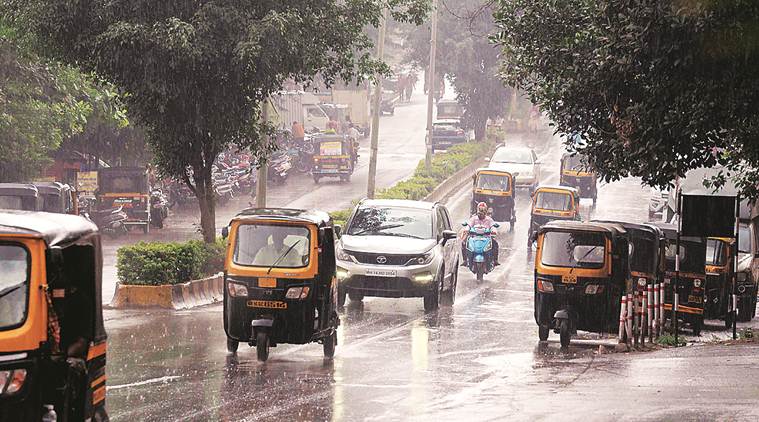Raigad, Ratnagiri, Sindhudurg and Satara will experience widespread heavy rainfall as well.
Five districts in the state, including Pune, have been placed under red alert, as the India Meteorological Department (IMD) has warned of heavy to extremely heavy rainfall this week.
Raigad, Ratnagiri, Sindhudurg and Satara will experience widespread heavy rainfall as well.
The IMD has sounded a red alert on July 2 and 3 for Raigad and Ratnagiri whereas Sindhudurg could experience heavy rainfall on July 2. Pune and Satara districts are likely to experience heavy spells on July 3, even though moderate spells are expected all through this week in most parts of Konkan and Madhya Maharashtra.
Since the heavy rainfall triggered by cyclone Nisarga – which hit Maharashtra’s coast in early June – it was only on Monday that Pune saw heavy rain. The city had been experiencing hot, humid and overcast sky conditions since last week, but no significant rainfall was realised until Sunday.
On Monday, the entire city reported continuous rain, beginning from afternoon hours. The rainfall recorded in the city till 5.30 pm was 50mm, and it remained the wettest city in the state on the day, IMD officials said.
Thunder, accompanied by heavy rain, led to severe water logging in several areas of the city, which slowed down even limited traffic along areas like Camp, Wanowrie, and Pune Railway Station.
“The rainfall is mainly associated with moisture-laden westerly winds, blowing in from the Arabian Sea over parts of Konkan and Madhya Maharashtra,” a senior official at IMD, Pune said. “There has been local heating, which also triggered some thunderous activity in isolated places.”
June has been particularly dry for Pune district, as Met officials said the monsoon entered a weak phase soon after its onset on June 10. The cyclone brought bountiful rain within the first week for Pune, Raigad, Ratnagiri and Sindhudurg districts, rainfall for the season in these areas has, so far, not slipped below normal.
Source: Read Full Article





